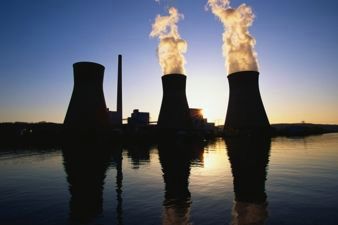
London / Nairobi – Action on climate change needs to be scaled-up and accelerated without delay if the world is to have a running chance of keeping a global average temperature rise below 2 degrees Celsius this century.
The Emissions Gap Report 2012, coordinated by the United Nations Environment Programme (UNEP) and the European Climate Foundation, and released days before the convening of the Climate Change Conference of the Parties in Doha, shows that greenhouse gas emissions levels are now around 10 per cent above where they need to be in 2020.
Instead of declining, concentrations of warming gases like carbon dioxide (CO2) are actually increasing in the atmosphere-up around 20 per cent since 2000. If no swift action is taken by nations, emissions are likely to be at 58 gigatonnes (Gt) in eight years’ time, says the report which has involved 55 scientists from more than 20 countries.
This will leave a gap that is now bigger than it was in earlier UNEP assessments of 2010 and 2011, and is in part as a result of projected economic growth in key developing economies and a phenomenon known as ‘double counting’ of emission offsets. Previous assessment reports have underlined that emissions need to be on average at around 44 Gt or less in 2020 to lay the path for the even bigger reductions needed at a cost that is manageable.
The Emissions Gap Report 2012 points out that even if the most ambitious level of pledges and commitments were implemented by all countries – and under the strictest set of rules – there will now be a gap of 8 Gt of CO2 equivalent by 2020. This is 2 Gt higher than last year’s assessment with yet another year passing by.
Preliminary economic assessments, highlighted in the new report, estimate that inaction will trigger costs likely to be at least 10 to 15 per cent higher after 2020 if the needed emission reductions are delayed into the following decades.
Achim Steiner, UN Under-Secretary General and UNEP Executive Director, said, “”There are two realities encapsulated in this report – that bridging the gap remains do-able with existing technologies and policies; that there are many inspiring actions taking place at the national level on energy efficiency in buildings, investing in forests to avoid emissions linked with deforestation and new vehicle emissions standards alongside a remarkable growth in investment in new renewable energies worldwide, which in 2011 totalled close to US $ 260 billion.”
“Yet the sobering fact remains that a transition to a low carbon, inclusive Green Economy is happening far too slowly and the opportunity for meeting the 44 Gt target is narrowing annually,” he added.
“While governments work to negotiate a new international climate agreement to come into effect in 2020, they urgently need to put their foot firmly on the action pedal by fulfilling financial, technology transfer and other commitments under the UN climate convention treaties. There are also a wide range of complementary voluntary measures that can that can bridge the gap between ambition and reality now rather than later,” said Mr. Steiner.
The report estimates that there are potentially large emissions reductions possible – in a mid-range of 17 Gt of CO2 equivalents – from sectors such as buildings, power generation and transport that can more than bridge the gap by 2020. Meanwhile, there are abundant examples of actions at the national level in areas ranging from improved building codes to fuel standards for vehicles which, if scaled up and replicated, can also assist.
Christiana Figueres, Executive Secretary of the UN Framework Convention on Climate Change, said, “”This report is a reminder that time is running out, but that the technical means and the policy tools to allow the world to stay below a maximum 2 degrees Celsius are still available to governments and societies.””
“Governments meeting in Doha for COP18 now need to urgently implement existing decisions which will allow for a swifter transition towards a low-carbon and resilient world. This notably means amending the Kyoto Protocol, developing a clear vision of how greenhouse gases can be curbed globally before and after 2020, and completing the institutions required to help developing countries green their economies and adapt, along with defining how the long-term climate finance that developing countries need can be mobilized. In addition, governments need to urgently identify how ambition can be raised,”” added Ms. Figueres.

Bridging the Gap
The report looked at sectors where the necessary emissions reductions may be possible by 2020.
Improved energy efficiency in industry could deliver cuts of between 1.5 to 4.6 Gt of CO2 equivalent; followed by agriculture, 1.1 to 4.3 Gt; forestry 1.3 to 4.2 Gt; the power sector, 2.2 to 3.9 Gt; buildings 1.4 to 2.9 Gt; transportation including shipping and aviation 1.7 to 2.5 Gt and the waste sector around 0.8 Gt.
Buildings
The report points out that some sectors have even bigger potential over the long term-boosting the energy efficiency of buildings, for example, could deliver average reductions of around 2.1 Gt by 2020 but cuts of over 9Gt CO2 equivalent by 2050.
“This implies that by 2050 the building sector could consume 30 per cent less electricity compared to 2005 despite a close to 130 per cent projected increase in built floor area over the same period,” it says.
The report concludes that if this is to happen, “state of the art building codes may need to become mandatory in the next 10 years in all of the major economies such as the United States, India, China and the European Union”.
Further emission reductions are possible from more energy efficient appliances and lighting systems. The report cites Japan’s Top Runner Programme and the Ecodesign Directive of the European Union which have triggered household electricity consumption savings of 11 per cent and 16 per cent respectively.
It also cites Ghana’s Standards and Labelling Programme for air conditioners which is set to save consumers and businesses an estimated US $ 64 million annually in reduced energy bills and around 2.8 million tonnes of CO2 equivalent over 30 years.



















